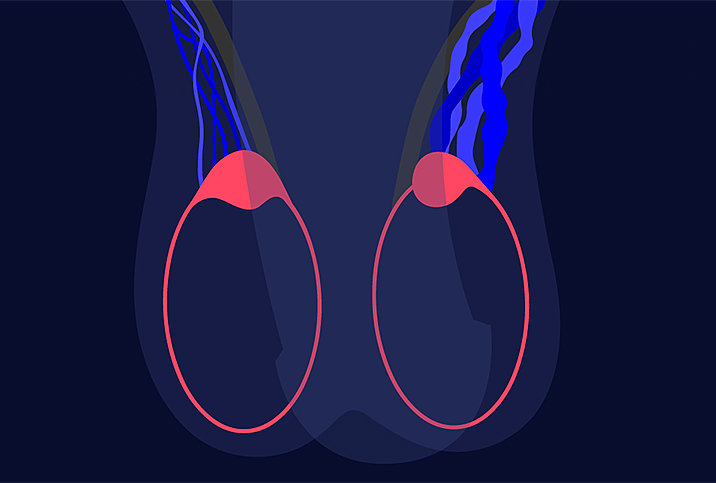How to Identify a Varicocele

Common in men, varicoceles occur when blood is trapped within one or several of the veins in the scrotum. Swelling, pain and a decrease in sexual function can follow; if a varicocele is left untreated, men may also experience infertility and chronic pain.
A varicocele can be caused by an injury or a defect in valves near the pelvis, and it can happen to any man. However, varicoceles do not go away independently; they typically require surgery. This condition can cause serious long-term effects, so it’s important to be able to recognize the symptoms and be aware of your treatment options.
Diagnosing a varicocele
Varicoceles are a fairly common genital complication for men: It’s believed about 15 percent of men will experience at least one varicocele in their lifetime. However, unless swelling or aching occurs in the scrotum, it can be difficult to self-diagnose, though that doesn’t mean you shouldn’t at least try.
Perform a self-test the next time you’re in the shower. The warm water will relax the skin around the scrotum and make it easier to feel the veins underneath. Start with one side and feel slowly for pain, enlargement in the veins or a feeling of heaviness. Move to the other side and search for the same symptoms. If you think you have found a varicocele, or something more serious like a lump, schedule a urology appointment as soon as you can. Men sometimes wait four to six months before they schedule an appointment, which gives their ailment time to spread and worsen.
What to expect
During a physical exam, a doctor will usually be able to detect a varicocele by feeling the entanglement of veins within the scrotum. For mild varicocele cases, your doctor may prescribe anti-inflammatory medications and recommend a medical sock or other aligning mechanism that will prevent the veins in the scrotum from tangling again.
For more serious cases, surgery is required. Surgery, which typically requires a two-week recovery time, is conducted via one of three general methods:
- Open surgery. Using general or local anesthetic, a doctor will access the affected vein through the groin area via a small incision.
- Laparoscopic surgery. A surgeon will make an incision in the abdomen, then insert a tiny instrument equipped with a camera into that incision. The surgeon will then move the instrument down the body to repair the varicoceles. General anesthesia is used for this method.
- Percutaneous embolization. A surgeon makes an opening in the femoral vein, then passes a small tube through that opening. Then, a specific chemical is released from the tube to create scarring that will divert blood flow away from the injured vein, sealing it and preventing the varicocele from returning.
A varicocele may go completely unnoticed, right up until the point that it becomes a major hindrance, both in terms of pain and fertility.
Self-examinations can be a great way for men to take control of their sexual health and identify varicoceles before they worsen or cause fertility problems. If you feel or see something resembling the symptoms of a varicocele, schedule an appointment as soon as possible to have a medical professional take a look and give you their diagnosis.

















